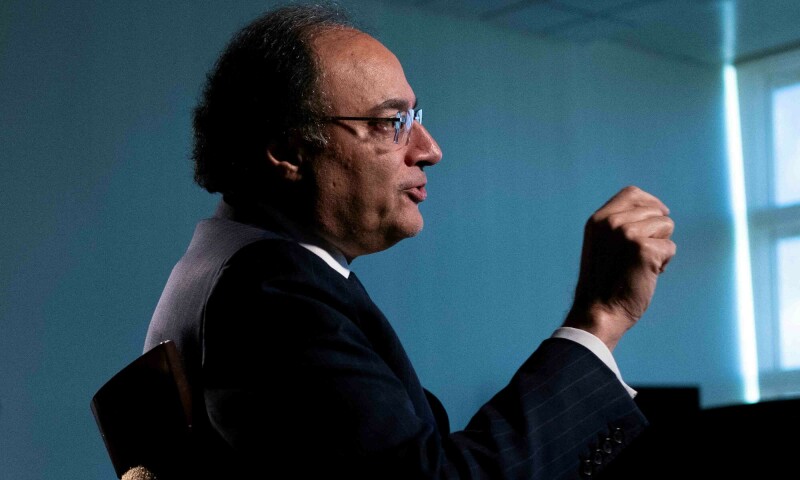
[ad_1]

Pakistan hopes to agree the contours of a new International Monetary Fund (IMF) loan in May, Finance Minister Muhammad Aurangzeb told Reuters, and has kicked off talks with ratings agencies to lay the groundwork for a return to international debt markets.
Pakistan’s current $3 billion arrangement with the Fund runs out in late April and the government is seeking a longer and bigger loan to help bring permanence to macroeconomic stability as well as an umbrella under which the country can execute much needed structural reforms, the minister said.
“We expect the IMF mission to be in Islamabad around the middle of May — and that is when some of these contours will start developing,” said Aurangzeb, who met with the Fund’s Managing Director Kristalina Georgieva on Wednesday during the International Monetary Fund and World Bank (WB) spring meetings.
Aurangzeb is currently in Washington to attend the spring meetings organised by the IMF and the WB.
He stated earlier that Pakistan had initiated discussions with the Fund over a new multi-billion dollar loan agreement to support its economic reform programme, adding that the country will at least be requesting a three-year programme.
The minister has also said that a new IMF deal would not lead to rapid rupee devaluation.
On Thursday, the Fund emphasised that prioritising reforms to revitalise the Pakistani economy outweighs the size of the new loan package being negotiated.
“I think what is important at this stage is to accelerate the reforms, double down on the structure of reforms in order to provide Pakistan with its full potential of growth,” IMF’s Middle East and Central Asia Director Jihad Azour said at a news conference in Washington.
Speaking to Reuters, Aurangzeb declined to outline what size programme the government hoped to secure. Aurangzeb added that once the IMF loan was agreed, Pakistan would also request additional financing from the Fund under the Resilience and Sustainability Trust.
Pakistan had managed to accumulate foreign exchange reserves in recent months and was on track for its war chest to hit $10bn — or roughly two months import cover — by end-June.
The debt situation also looked more benign, Aurangzeb said.
“The bulk of our bilateral debt — including our China debt — is being rolled over, so in that sense I think we are in good shape and I don’t see a big issue during this fiscal year nor next fiscal year, cause we need to repay roughly $25bn dollars every fiscal year,” he said.
He further said that Pakistan also hoped to come back to international capital markets, possibly with a green bond. However, there was some more work to be done before that happens, Aurangzeb said.
“We have to come back into a certain ratings environment,” he said, having kicked off talks with ratings agencies, adding the government was hoping to get an improvement in its sovereign rating in the next fiscal year.
“In all likelihood, any international capital markets issuance will likely be in the 2025/2026 fiscal year,” he said.
[ad_2]
Source link






